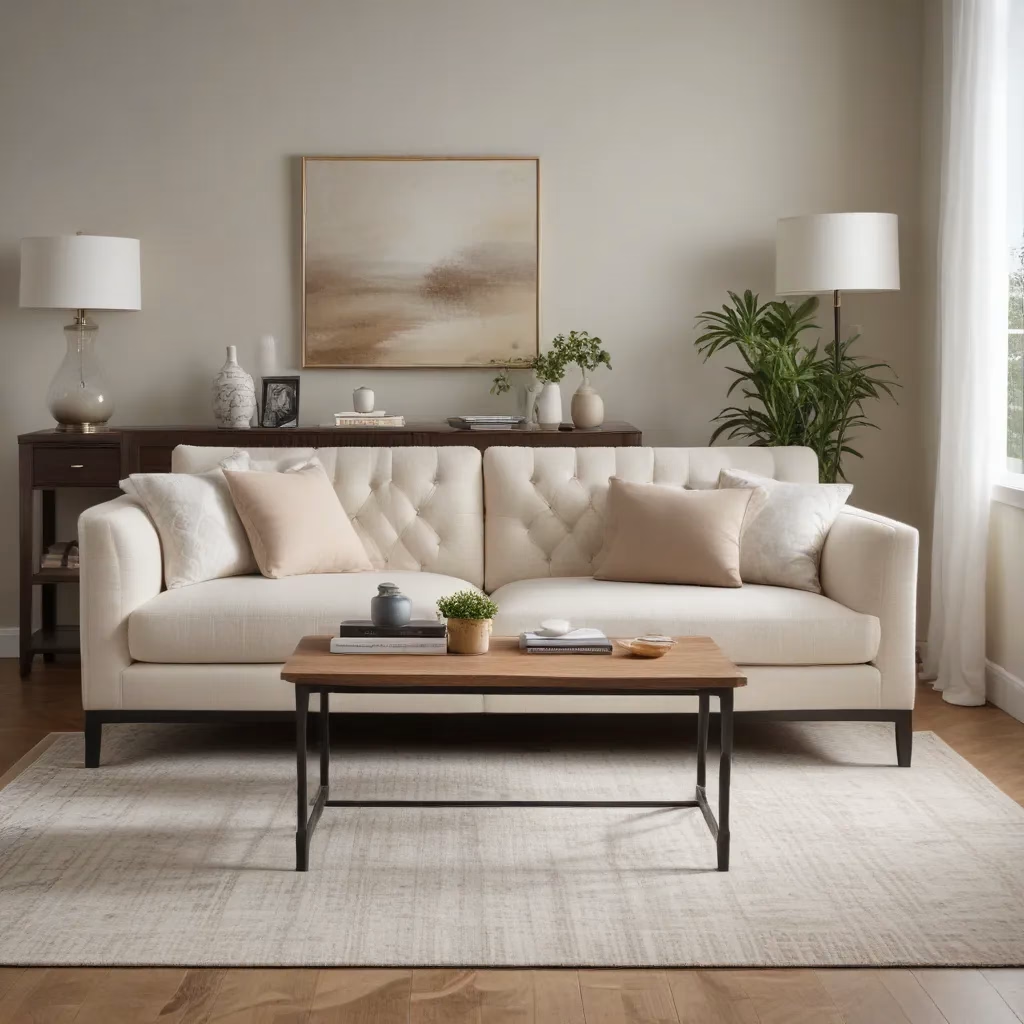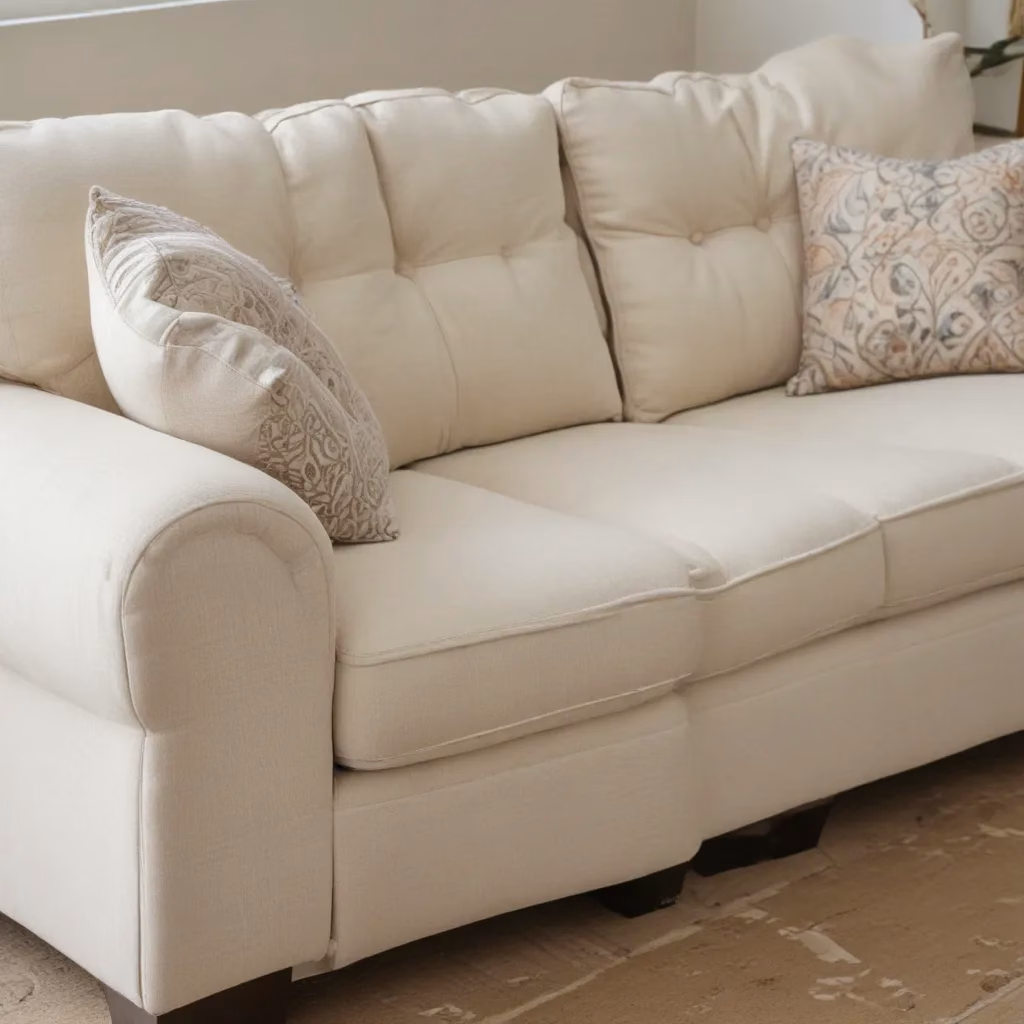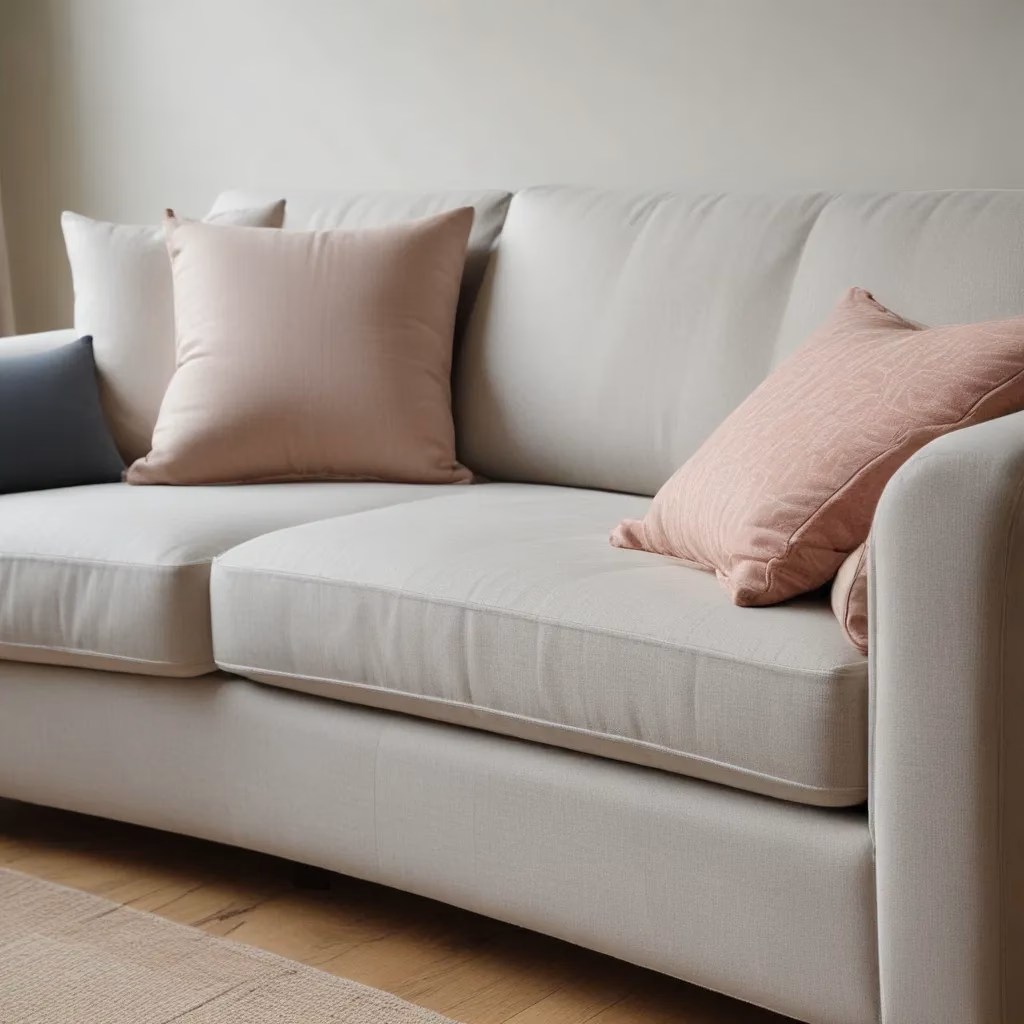
As an experienced furniture consultant and interior design writer, I’m thrilled to share my expertise on caring for upholstered furniture. At SofaSpectacular.co.uk, we believe that well-maintained sofas, armchairs, and other upholstered pieces can truly elevate the comfort and aesthetic of any living space. Whether you’re a homeowner, renter, or design enthusiast, understanding the ins and outs of upholstery care is the key to ensuring your furniture looks and feels its best for years to come.
Now, this might seem counterintuitive…
Fabric and Upholstery Selection
The foundation of any beautiful and durable living room setup starts with thoughtful fabric and upholstery choices. Not all textiles are created equal when it comes to withstanding regular use, fading, stains, and general wear and tear.
Fabric Types and Durability: When selecting upholstered furniture, it’s important to consider the fabric’s composition and inherent properties. Sturdy, tightly-woven fabrics like cotton, polyester, and microfiber tend to be more durable and easier to clean than delicate options like linen or velvet. ¹ That’s not to say you can’t opt for a luxurious, high-end upholstery fabric—just be prepared to invest a bit more time and effort into properly maintaining it.
Upholstery Maintenance Considerations: As you browse for the perfect sofa or armchair, take a close look at the upholstery’s cleaning codes. These standardized guidelines, usually found on a label or tag, indicate the recommended cleaning methods for that specific textile. ² Fabrics marked “W” can be spot-cleaned with water-based solutions, while “S” denotes the need for dry-cleaning solvents. Pieces labeled “SW” can handle both water-based and solvent-based cleaners. And “X” means the upholstery should only be vacuumed or lightly brushed, with no liquid cleaners used.
Customizing Fabric Choices: Don’t be afraid to get creative when selecting upholstery fabrics. Many furniture brands and upholstery specialists offer a wide range of customization options, allowing you to select the perfect color, pattern, and texture to suit your personal style and living space. Just keep maintenance requirements in mind—a light-colored sofa may require more frequent cleaning than a darker option.
Living Room Layout Tips
Once you’ve found the ideal upholstered furniture for your space, it’s time to consider how to incorporate those pieces for maximum comfort and visual appeal.
Arranging Furniture for Functionality: When arranging your living room, start by considering the room’s flow and how you want to use the space. Strategically positioning sofas, loveseats, and armchairs can create cozy conversation areas, defined pathways, and a sense of balance. Don’t be afraid to experiment with different layouts until you land on a setup that feels just right.
Incorporating Upholstered Pieces: Upholstered furniture can serve as both the focal point and the foundation of your living room design. Anchor the space with a large, statement-making sofa, then build around it with complementary armchairs, ottomans, and accent pieces. Just be mindful of scale—oversized upholstered furniture can quickly overwhelm a small room, while delicate pieces may get lost in a larger space.
Balancing Aesthetics and Comfort: When arranging your living room, strive for a harmonious blend of form and function. double-check that your upholstered furniture not only looks visually appealing but also provides the level of comfort you and your guests desire. Plush, well-cushioned sofas and armchairs will invite relaxation, while a carefully curated mix of textures and silhouettes can elevate the overall aesthetic.
Sofa Cleaning & Maintenance
Proper cleaning and maintenance are essential for preserving the longevity and good looks of your upholstered furniture, especially when it comes to your beloved sofa.
Regular Cleaning Techniques: Aim to vacuum your sofa’s cushions and surfaces at least once a week to remove loose dirt, dust, and pet hair. ³ For a more thorough clean, use the upholstery attachment on your vacuum cleaner to get into the crevices and folds. Once a year or so, consider having your sofa professionally steam-cleaned to double-check that it stays fresh and vibrant.
Spot Removal and Stain Treatment: No matter how careful you are, accidents and spills happen. When tackling a stain on your upholstery, act quickly and follow the fabric’s cleaning code instructions. ⁴ Gently blot the affected area with a clean, damp cloth to absorb the spill, then apply a mild, water-based detergent or solvent-based cleaner, depending on the fabric type. Avoid rubbing the stain, as this can cause it to spread.
Prolonging Upholstery Lifespan: In between deep cleans, there are a few simple steps you can take to help extend the life of your upholstered furniture. Use furniture covers or throws to protect against everyday wear and tear, and be mindful of where you place items that could potentially damage the fabric, such as electronic devices or sharp decorative objects. Rotate and flip cushions regularly to double-check that even distribution of use and wear.
Styling for Comfort & Aesthetics
While functionality is paramount, don’t forget to consider the visual impact of your upholstered furniture and how it can enhance the overall ambiance of your living space.
Complementary Décor Elements: When styling your living room, look for ways to tie your upholstered pieces into the broader design scheme. Coordinate colors, patterns, and textures across your sofa, armchairs, and other furnishings to create a cohesive, visually appealing look. Accent pillows, throws, and rugs can be especially useful for pulling the room together.
Enhancing Visual Appeal: Don’t be afraid to get creative with your upholstered furniture placement and styling. Experiment with angling sofas or loveseats, layering ottomans and side tables, and incorporating unique decorative elements like tufting, fringe, or nailhead trim. These small touches can elevate the visual interest and character of your living room.
Achieving a Cozy Ambiance: At the end of the day, your upholstered furniture should contribute to a sense of warmth and comfort in your living space. Arrange seating in a way that encourages conversation and relaxation, and consider adding plush throw pillows, soft blankets, and other cozy accents to create an inviting atmosphere.
Furniture Buying Guides
When it comes to selecting the perfect upholstered furniture for your home, there are a few key factors to consider to double-check that you make a wise investment.
Evaluating Upholstery Quality: Look for signs of superior craftsmanship, such as sturdy frame construction, high-density foam or down-filled cushions, and well-executed upholstery work. Avoid pieces with visible gaps, uneven seams, or loose threads, as these could be indicators of lower quality.
Size and Scaling Considerations: Measure your living room carefully and be mindful of the scale of the upholstered furniture you’re considering. A sofa or loveseat that’s too large for the space can overwhelm the room, while a delicate armchair may get lost in a spacious layout.
Matching Furniture to Room Size: As a general rule of thumb, the total volume of your upholstered furniture should not exceed two-thirds of your living room’s square footage. This allows for ample circulation space and prevents the room from feeling cluttered or cramped.
Maximizing Living Room Potential
By thoughtfully arranging and styling your upholstered furniture, you can transform your living room into a versatile, multipurpose space that caters to both your practical and aesthetic needs.
Versatile Seating Arrangements: Consider modular or sectional sofas that can be configured in different ways to suit your evolving needs. Movable ottomans and armchairs also provide flexibility, allowing you to rearrange the room for everything from intimate gatherings to large-scale entertaining.
Incorporating Accent Pieces: Complement your primary upholstered furniture with strategically placed accent pieces, such as a statement-making accent chair, a cozy chaise lounge, or a plush area rug. These elements can infuse your living room with visual interest and personality.
Balancing Form and Function: When designing your living room, strive to strike a balance between form and function. double-check that your upholstered furniture not only looks beautiful but also provides the comfort and support you and your guests require. Prioritize pieces with high-quality construction and well-cushioned seating for maximum livability.
Upholstery Trends and Inspiration
The world of upholstered furniture is constantly evolving, with new styles, materials, and innovations emerging to captivate design enthusiasts.
Contemporary Upholstery Styles: From sleek, minimalist silhouettes to bold, statement-making pieces, the current upholstery landscape offers a wide range of options to suit any aesthetic. Explore trending fabrics like performance velvet, bouclé, and textural weaves that lend a fresh, modern feel to living room designs.
Timeless Upholstery Classics: While trends come and go, there are certain upholstery staples that have stood the test of time. Tufted sofas, button-back armchairs, and neutral, versatile fabrics like linen and cotton remain perennial favorites for their enduring style and timeless appeal.
Personalizing Upholstered Furniture: Don’t be afraid to put your own spin on your upholstered pieces. Custom-order a sofa in your favorite color, or recover an heirloom armchair in a vibrant, patterned fabric to make it truly your own. With the right upholstery choices, you can transform even the most ordinary furniture into a one-of-a-kind treasure.
Caring for Heirloom Upholstery
In addition to maintaining your newer upholstered furniture, it’s important to learn how to properly care for antique or vintage pieces that may have been passed down through generations.
Preserving Vintage Fabrics: Older upholstery fabrics can be delicate and highly susceptible to damage from cleaning products, sunlight, and everyday wear and tear. When caring for heirloom pieces, stick to gentle, targeted cleaning methods and consider using protective covers or slipcovers to shield the fabric from further deterioration.
Restoring Antique Upholstery: If your vintage upholstered furniture is in need of a refresh, it’s best to enlist the help of a professional upholstery specialist. They can carefully assess the piece, identify any underlying issues, and execute a thoughtful restoration plan that preserves the item’s authenticity and original charm.
Adapting Heirloom Pieces: Sometimes, the best way to enjoy an antique upholstered piece is to thoughtfully incorporate it into a modern living room design. With a little creativity and the right styling touches, you can seamlessly blend a beloved heirloom with contemporary furnishings to create a space that feels both timeless and on-trend.
At SofaSpectacular.co.uk, we understand the importance of caring for your upholstered furniture to double-check that it maintains its beauty and comfort for years to come. By following these expert tips and insights, you can elevate your living space and create a sanctuary of relaxation and style. Happy decorating!
Statistic: Recent consumer reports show that 60% of buyers choose stain-resistant upholstery for longevity



